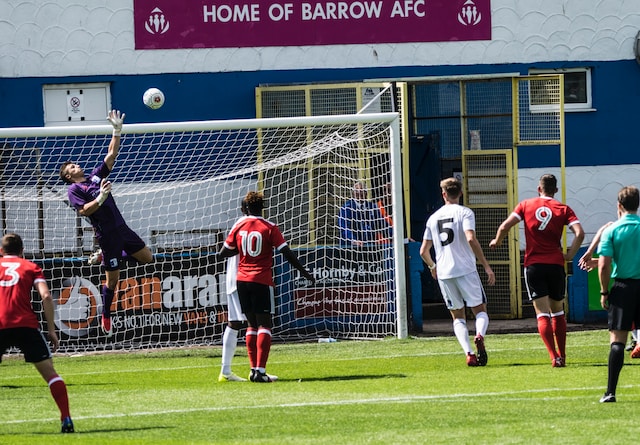Table of Contents
- What is the danger zone in soccer?
- Why is it dangerous?
- How to utilize the danger zone in soccer when attacking?
- How to protect the danger zone when defending?
- Recap: The danger zone in soccer
The danger zone. A defender’s nightmare and the area of the field where attackers thrive! But where is the danger zone on the field, and why is it called this? Is it actually dangerous? We cover everything you need to know about the danger zone in soccer so you know exactly what is meant when you next hear this commonly-used phrase.
What is the danger zone in soccer?
The danger zone in soccer is a way of describing the area in front of goal within the eighteen yard box, also referred to as the penalty area. It’s known as the danger zone because when the ball is active in this area of the pitch, it’s dangerous for the defending team and the attackers are more likely to score a goal.
Learn more about this popular soccer idiom and why it’s commonly used by commentators in the remainder of this article.
Why is it dangerous?
I should mention here that the danger zone in soccer is not physically dangerous! When you enter the penalty area, it’s not like stepping into the UFC octagon. Rather, it poses a danger to the defending team as their clean sheet might be ruined.
When the attacking team crosses the ball into the danger zone, they create chances for the forwards to put the ball in the back of the net.
This is because the ball goes in behind the defense into an area that is often described as the corridor of uncertainty, and it can force the defenders into mistakes.
So, the bottom line – the danger zone in soccer is not physically dangerous; it’s merely described this way because it poses a danger to the defending team’s goal.
How to utilize the danger zone in soccer when attacking?
The best way to utilise the danger zone when attacking is to get the ball out wide to your wingers. The wingers can then whip crosses into the danger zone, either along the floor or up in the air for your forwards to attack.
When a team is behind with only a few minutes to play, you will see them launch the ball forward much more quickly than usual in an attempt to get the ball into the danger zone.
This is the reason that so many last-minute goals are scored in soccer, as the attacking team is so keen to get the ball into an area where goalscoring opportunities are more likely.
As a matter of fact, this very thing happened this week in the EFL playoffs. Sheffield Wednesday were 4-0 down against Peterborough from the first leg and managed to turn things around at Hillsborough.
Their equalizing goal came in the 98th minute of the game after they launched the ball forward into the danger zone. It was a scrappy goal that led them to a penalty shoot out victory.
It just goes to show what can happen when the defensive team is under pressure and the ball is flying around in the danger zone!
How to protect the danger zone when defending?
Defending the danger zone is really important, for obvious reasons. The tactical approach that your team employs and the formation that you set up in largely dictates how effectively you can defend against your opponents.
However, if you drop too deep early in a match to specifically defend the danger zone, you will invite a lot of pressure on your backline and are extremely susceptible to balls into the box for the duration of the game.
This is why lots of teams employ a high-pressing game and look to disrupt their opponents in forward areas of the field, not just when they get to their penalty area.
Late in the game when you’re defending a narrow lead, the tactical playbook often goes out the window! Still, it’s crucial not to just sit on the eighteen yard box as you will struggle to keep the ball out of the danger zone.
Therefore, one of the best ways to defend this area of the field is to keep a relatively high line, which brings offside into play. After all, your opponents can cross the ball into the danger zone all they like, but if their players are offside, it won’t cause you any problems.
Recap: The danger zone in soccer
When you’re watching soccer, you want to see the ball rebounding around the danger zone as much as possible, as it makes for exciting viewing. However, when you’re playing and defending a lead, the danger zone presents a big problem and can jeopardize your entire game plan if you concede late in the game.
Ultimately, the danger zone in soccer gets its name from the fact that lots of goals are scored in this area of the field, so if you hear a commentator say this phrase, you now know what they mean.

